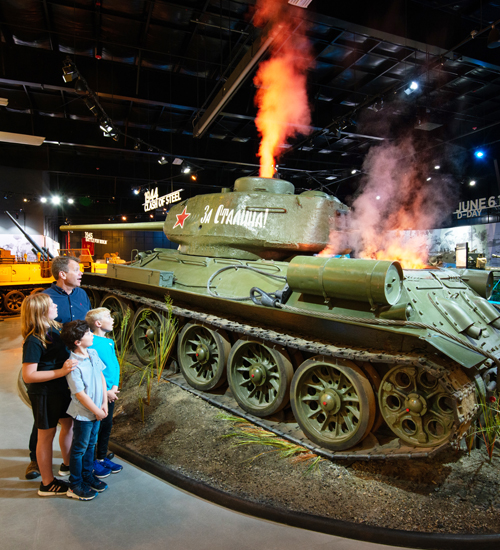Clash of Steel
Panther Ausf. A – GER | TANK
Germany launched Operation Barbarossa, its invasion of the Soviet Union, on June 22nd, 1941. The tank battles the ensued between the Soviet Union and Germany were massive. The Clash of Steel exhibit features two of the most advanced tanks along the Eastern Front: the Russian T-34/85 and the Panther Ausf. A.
The Battle of Kursk was the largest tank battle in history, involving some 6,000 tanks, 2,000,000 troops, and 4,000 aircraft. It marked the decisive end of the German offensive capability on the Eastern Front and cleared the way for the great Soviet offensives of 1944–45. Battle of Kursk, (lasting from July 5, to August 23, 1943), was an unsuccessful German assault on the Soviet city of Kursk in western Russia. In an attempt to recover the offensive on the Eastern Front, the Germans planned a surprise attack on the from both north and south, hoping to surround and destroy the Soviet forces within the bulge that was created by Soviet defenses. The Soviets had surmised the German attack beforehand and had withdrawn their main forces from the obviously threatened positions.
The Germans launched their attack on July 5, but they soon encountered deep antitank defenses and minefields, which the Soviets had placed in anticipation of the attack. The Germans advanced only 10 miles into the north and 30 miles in the south, losing many of their tanks in the process. At the height of the battle on July 12, the Soviets began to counterattack, having built up both troops and tanks. Their successes encouraged them to develop a broad offensive that recovered the nearby city of Orel (now Oryol) on August 5 and that of Kharkov (now Kharkiv, Ukraine) on August 23 and helped clear their advancements into Germany.




